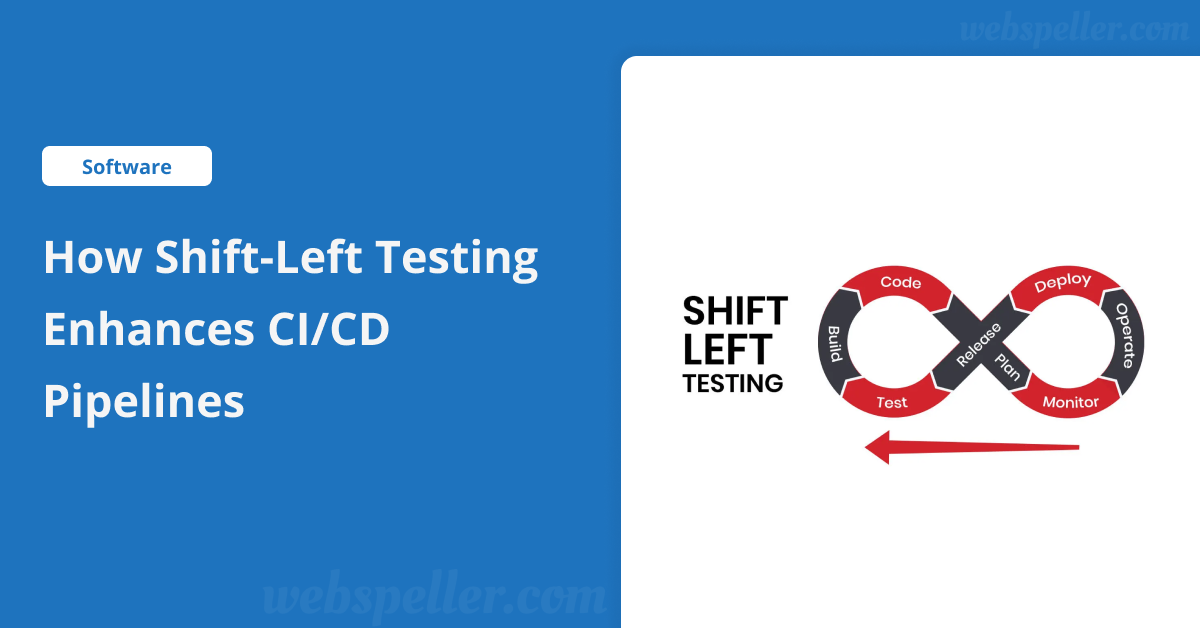Table of Contents

Introduction
Shift-Left Testing is a critical component of the software development lifecycle, ensuring that products are delivered with minimal bugs and enhanced reliability. Despite its importance, many traditional teams still choose to conduct tests only at the final stages of development. This approach is fundamentally flawed, as it delays feedback, hinders early issue identification, and ultimately increases costs and time to market.
To achieve quicker feedback, testing should be integrated earlier in the development lifecycle. This Shift-Left methodology applies to both functional and non-functional testing, allowing developers and testers to collaborate closely in creating and executing test cases during the initial phases of development.
What Does Shift-Left Mean?
Shift-Left refers to moving testing activities to the early stages of the software development lifecycle. If security testing is performed only when the code is ready for production, it may be too late to rectify issues swiftly, leading to delays and potential security vulnerabilities.
This strategy aims to enhance delivery quality while preventing and addressing problems as early as possible. Initially adopted in frameworks like Test-Driven Development (TDD) and Behavior-Driven Development (BDD), Shift-Left is now being implemented across various domains. Continuous Integration/Continuous Delivery (CI/CD) platforms facilitate the deployment of tools that enable verification and testing at every stage of the development process.
Related Methodologies
The Shift-Left approach encompasses four methodologies that tackle problems at different stages of the software development lifecycle:
- Incremental: Ideal for large, complex systems, this methodology ensures each segment is validated before further development.
- Traditional: Suitable for lighter validations and less complex systems, it focuses on validating unit and integration testing stages.
- Agile/DevOps: Based on sprint cycles, this methodology emphasizes testing during development and non-operational phases.
- Model-Based: Unlike others, this methodology validates requirements, architecture, and design prior to development.
When Can Shift-Left Be Applied?
As organizations transition to a DevSecOps framework, it’s crucial to integrate security testing earlier in the development lifecycle. This integration involves incorporating security testing into deployment pipelines, allowing for continuous code assessments not only against other commits but also regarding overall security.
Continuous Integration (CI) champions code quality improvement through deployment pipelines. Security measures can be integrated from the outset, incorporating Shift-Left practices into CI pipelines such as:
- Static Application Security Testing (SAST): Automates security checks within the CI process by analyzing source code to identify vulnerabilities early in the lifecycle. For instance, GitLab CI verifies SAST reports and highlights vulnerabilities during merge requests.
- Dynamic Application Security Testing (DAST): A black-box testing method that uncovers security flaws through automated scanning of running applications. While SAST focuses on source code, DAST examines runtime errors and vulnerabilities that may arise post-deployment.
- Threat Modeling: A systematic process that evaluates every decision made within a system to understand its security implications. This involves identifying security requirements, potential threats, and quantifying their criticality for prioritizing remediation efforts.
- Security Architecture Review: Identifies, assesses, and mitigates risks to bolster an organization’s defenses against existing and emerging threats.
- Container Image Scanning: Analyzes container images layer by layer to detect potential security vulnerabilities.
- Code Signing: A method that applies a digital signature to programs or files, verifying their authenticity and integrity during installation and execution.
Additional security tests like Interactive Application Security Testing (IAST) and Runtime Application Self-Protection (RASP) enhance these methodologies, with IAST placing an agent inside an application and RASP acting as a security tool responding to live threats.
Shift-Left Benefits
The Shift-Left strategy focuses on identifying and resolving vulnerabilities early when code is being written, ensuring better security and enhancing user experience through faster, higher-quality software delivery.
Practically, it boosts development efficiency and reduces overhead by identifying and rectifying bugs sooner. Here are the main benefits:
- Early identification of bugs and performance issues, simplifying fixes.
- Significant reduction in testing and maintenance costs through early detection.
- Higher quality final products with fewer bugs and performance issues.
- Shortened time to market due to integrated testing and rapid feedback.
- Improved customer satisfaction through enhanced user experience.
Conclusion
Shift-Left testing aligns seamlessly with Agile and DevOps practices, producing higher-quality products while minimizing costs and time. Its popularity within the testing community stems from its ability to identify issues earlier at a lower correction cost. The strategy is increasingly embraced among DevOps teams.
Despite concerns that it might slow down development and complicate the release of new features, Shift-Left provides a sophisticated strategy for ensuring application optimization and performance.
Tools designed with Agile development in mind demonstrate that a few extra minutes in the pipeline can yield substantial security benefits, ensuring high-quality delivery to end users and preventing potential issues in applications.


